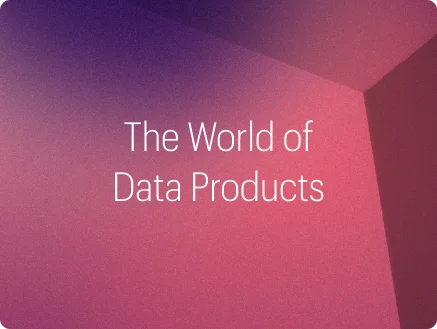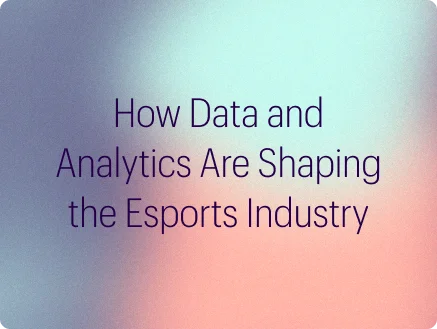A childhood interest that’s turned into an enduring passion, there’s nothing Nabeel Ahmed would rather talk about than cars. With just a little under a decade of experience in helping Fortune 500 Companies across industries make better decisions using Data Science & Analytics, he has been instrumental in our Automotive Practice over the past year. As an Engagement Manager, he has led a range of projects for one of the largest Auto manufacturers in the world. In this Q&A, Nabeel shares his opinions on marketing analytics developments in the Auto industry.
Q: What have been the key developments in automotive marketing analytics in the past decade?
Nabeel: Marketing content and approaches based on consumer-generated data, including web and app data, have seen a rise in recent years. There is also a vast amount of vehicle-based data from connected vehicles available today: the average vehicle produces approximately 4–10 TB of data everyday, which gives manufacturers insight into how customers use their vehicles. This information helps build detailed driver profiles and personas and enables manufacturers to identify new products/parts/services to market to existing owners and new customers. More importantly, it allows them to provide personalized experiences to customers.
Q: What trends are set to shape the automotive industry in the near future?
Nabeel: It is common knowledge that two prominent trends are shaping the auto industry right now: electrification and autonomous driving. However, the degree of innovation and technology adoption varies across manufacturers. We are seeing a variety of approaches, from acquiring businesses that specifically focus on electrification and automation to investing in start-ups in the space and manufacturers even developing technology in-house.
If we take the example of drive assist technology, there is a lot of variety within this specific space: ranging from basic features such as lane departure assist to cutting-edge semi-autonomous driving. Pervasive electrification has seen the release of PHEVs to all-electric offerings from a variety of manufacturers. I can think of an American electric car company that has the pioneer advantage when it comes to electrification as well as autonomous vehicles, and a lot of legacy brands are trying to play catch up.
Q: Can marketing analytics offer immediate results for business, including ROI for marketing spend and tangible impact on brand building? Can you share an example of a recent success story?
Nabeel: Yes, marketing analytics can definitely ensure immediate ROI and impact brand building endeavors tangibly. This depends on the maturity of a brand. For instance, at MathCo, we are working on a platform to better understand customers. We are also using entirely new data sources, which have not been used in the past, to build advanced models and tailor an automotive client’s marketing campaigns and content. This new approach shows potential customers offerings that they would more likely be interested in rather than a one-size-fits-all approach. This has resulted in much higher response rates for our client.
Q: How can marketing analytics add value to other functions within an automotive organization?
Nabeel: Intelligence originating from marketing campaigns can be used as input by other functions of the business, for example, in demand forecasting or product pricing. Information about customers can be vital in providing the best service possible—this can be at a dealership during service visits or ensuring that a car owner receives the best experience while calling customer care. The value generated by marketing analytics for other functions in an automotive organization is immense.
Q: How important is the right partnership for marketing analytics in the automotive industry?
Nabeel: Marketing investments are a major focus across the industry since automakers rely heavily on advertisements and other marketing channels to build their brand and create awareness and interest for their offerings. Analytics is integral to this effort.
Auto manufacturers are at the forefront of engineering and material sciences, and when it comes to marketing analytics, it pays to understand an organization’s maturity and identify where it stands amongst its peers. This realization can then be used to create a path to improve the capabilities from a personnel and technology standpoint. One of the ways of doing this, albeit a time-consuming one, is by hiring the right talent and upskilling employees. A faster route is partnering with external consultants who bring not only expertise on the subject but also a cross-industry perspective on problems in the auto industry.
Q: How do you enable robust decision-making for marketing in the auto industry?
Nabeel: This is not very different from enabling marketing decision-making in any other industry. It involves the following steps:
- Collecting the right data.
- Being able to efficiently leverage data that is scattered across the organization.
- Bringing together the latest algorithms and techniques available from a data science and statistics standpoint.
- Layering in nuances by collaborating closely with business stakeholders.
- Finally, tying everything together to build robust scalable solutions.
- These are some of the key ingredients to ensuring robust decision-making in any industry and is no different for the marketing function in the auto industry.
Q: What is one area where automakers can improve on their marketing analytics solutions?
Nabeel: I believe personalization is a key area where auto manufacturers can improve on what they are doing today. We often get marketing emails with sales and service offers from dealerships—tailoring these to customers by understanding them better can vastly improve the effectiveness of these campaigns. The Phase 0 of this effort would be to build a Customer Data Platform that ties together all the information available about customers, ranging from past purchases to service records, web browsing data, app, and connected car data. This new vantage point can help the marketing analytics team unlock potential marketing efforts that were non-existent in the past and improve existing ones in place.
Bonus Q: What is one automotive trend you’d like to see realized in the near future?
Nabeel: Well, this would be the opposite of a trend: As cliched as it sounds, I really hope that manual transmission doesn’t go away for good. While we as a society are naturally moving towards automatic transmissions for convenience and efficiency, and from V6 and V8 engines to smaller, more efficient turbocharged engines—and while this is great for the environment and I’m all for it—as an Auto-enthusiast, I hope that high-displacement manual transmission offerings don’t go away.


